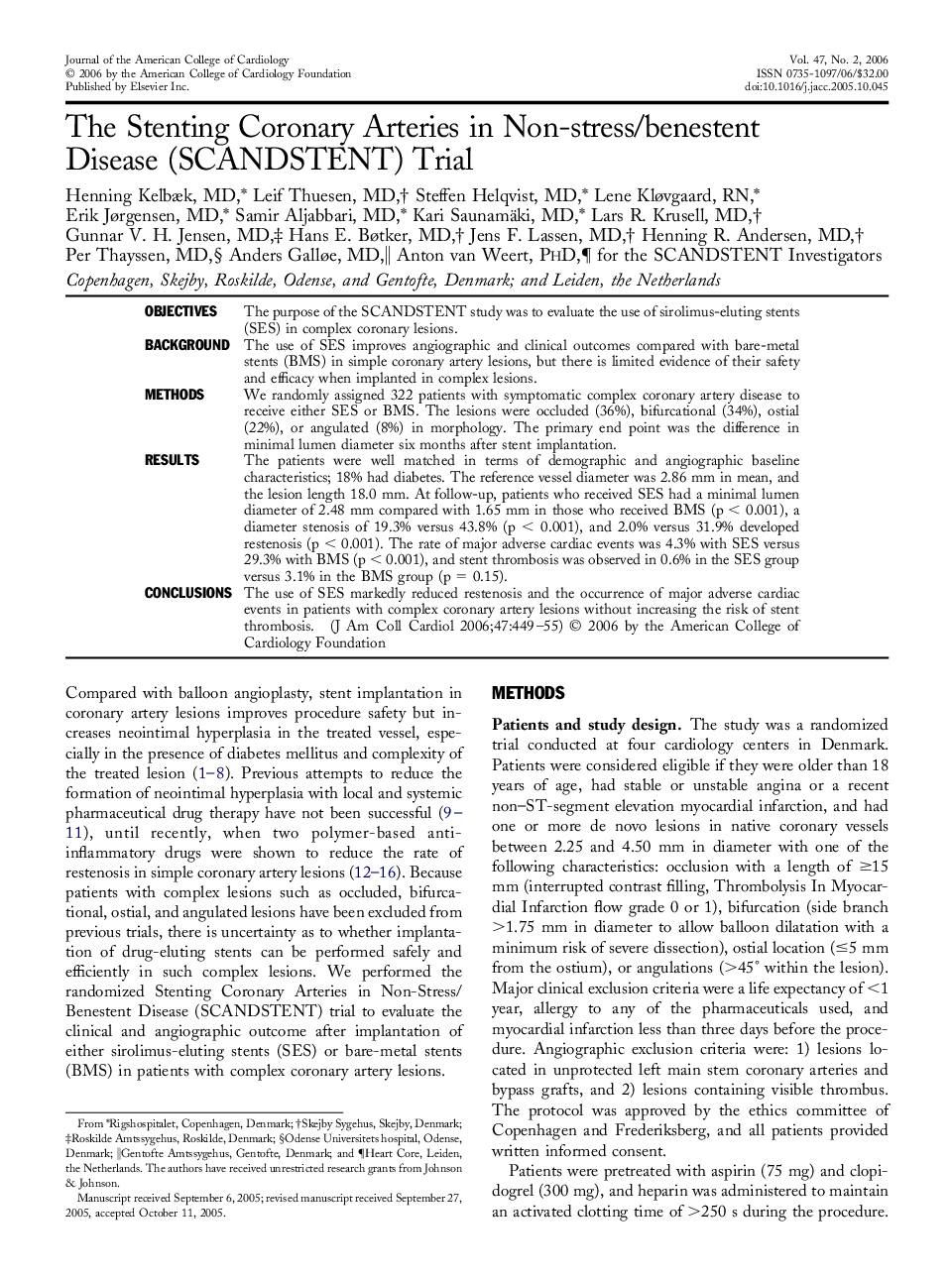| Article ID | Journal | Published Year | Pages | File Type |
|---|---|---|---|---|
| 2954260 | Journal of the American College of Cardiology | 2006 | 7 Pages |
ObjectivesThe purpose of the SCANDSTENT study was to evaluate the use of sirolimus-eluting stents (SES) in complex coronary lesions.BackgroundThe use of SES improves angiographic and clinical outcomes compared with bare-metal stents (BMS) in simple coronary artery lesions, but there is limited evidence of their safety and efficacy when implanted in complex lesions.MethodsWe randomly assigned 322 patients with symptomatic complex coronary artery disease to receive either SES or BMS. The lesions were occluded (36%), bifurcational (34%), ostial (22%), or angulated (8%) in morphology. The primary end point was the difference in minimal lumen diameter six months after stent implantation.ResultsThe patients were well matched in terms of demographic and angiographic baseline characteristics; 18% had diabetes. The reference vessel diameter was 2.86 mm in mean, and the lesion length 18.0 mm. At follow-up, patients who received SES had a minimal lumen diameter of 2.48 mm compared with 1.65 mm in those who received BMS (p < 0.001), a diameter stenosis of 19.3% versus 43.8% (p < 0.001), and 2.0% versus 31.9% developed restenosis (p < 0.001). The rate of major adverse cardiac events was 4.3% with SES versus 29.3% with BMS (p < 0.001), and stent thrombosis was observed in 0.6% in the SES group versus 3.1% in the BMS group (p = 0.15).ConclusionsThe use of SES markedly reduced restenosis and the occurrence of major adverse cardiac events in patients with complex coronary artery lesions without increasing the risk of stent thrombosis.
